A reading of the decision
After Bank Al-Maghrib’s opinion, the Ministry of Finance decided to proceed, starting Monday March 9th 2020, to a widening of the dirham’s fluctuation band from ± 2.5% to ± 5% compared to a central rate set by Bank Al-Maghrib at 60% EUR and 40% USD basket. The press release adds that the widen-ing comes after the achievement of the objectives assigned to the first phase initiated in January 2018. It specifies that this further step takes place in a favorable macroeconomic and financial context and recalls that this voluntary process, which is scheduled over several stages, will allow for a strength-ening of the economy’s capacity to absorb shocks and to support its competitiveness.
In this context, BAM reassures that it will continue to play its role as a market regulator if necessary.
We believe that the timing used to implement this reform is appropriate for two reasons:
- Announcement effect: This reform was announced on Friday March 6th for an implementation the Monday March 9th, which ensures the smoothest transition possible.
- Fundamentals state: Although this may seem paradoxical, this kind of measures is appropri-ate as well when (1) the fundamentals are in good shape and this proves that an economy has a good resilience or when (2) an economy is in a situation of shock and such a measure acts as a catalyst to restore balance.
In our case, we claim to be in the first case where the Moroccan economy shows a satisfactory level in terms of indicators linked to fiscal and external trade balances; although Morocco as-pires to a more sustained growth.
Likewise, we have several reasons to believe that the foreign exchange market has gained maturity:
- An interbank market which is gaining in depth and which displays an increasing level of activity allowing to bring out a reference price for customers quotations;
- Bank Al Maghrib perfectly fits its role of last instance, with an absence of interventions since April 2018; - A self-functioning of the interbank market making it possible for operators to mutually meet their foreign exchange needs.
In perspective, by authorizing a variation of ± 5% compared to the central rate, Bank Al-Maghrib starts a new phase of MAD flexibility with more considerable issues:
- Permission for more flexibility: In order to reach a MAD equilibrium price, with a po-tential volatility as collateral, where it is noted that the MAD volatility is due to a Supply and Demand confrontation rather than an EUR/USD basket effect.
- Expectation of greater economic benefit with the target of supporting the exporting sectors, and the creation of a currency adjustment mechanism which could help absorb any external shock. Not to mention an effect on inflation, which is an aggregate to be closely monitored after the reform.




